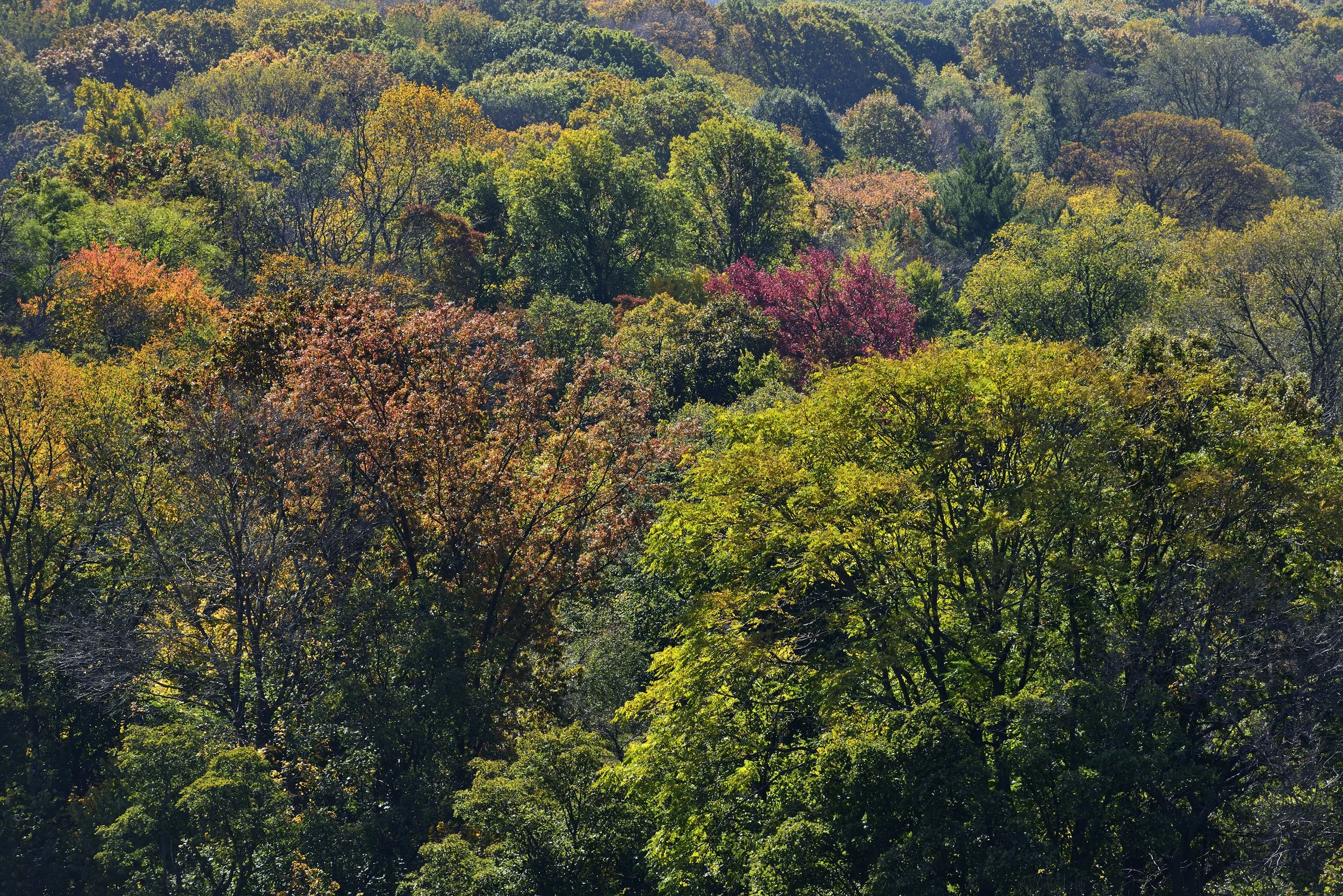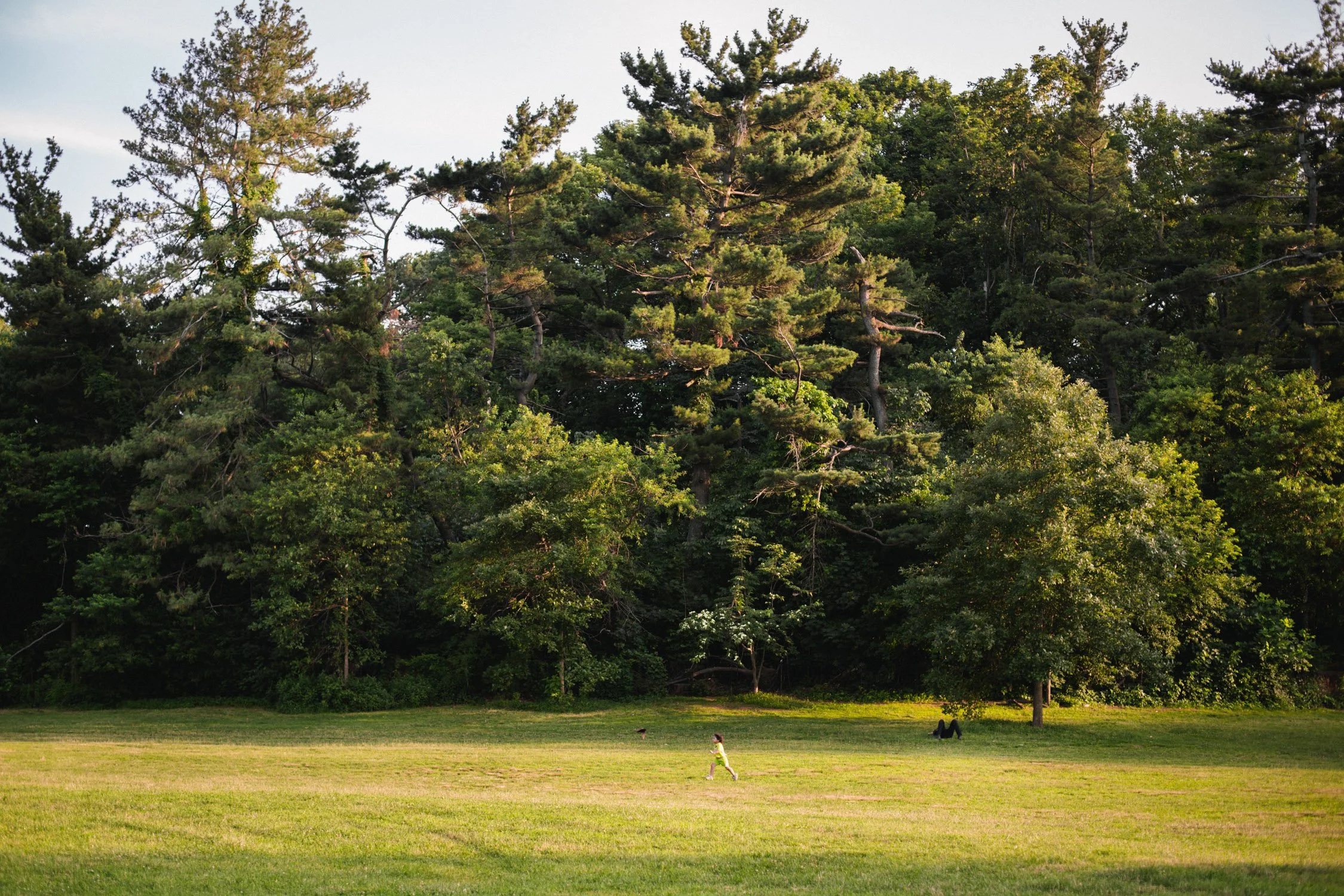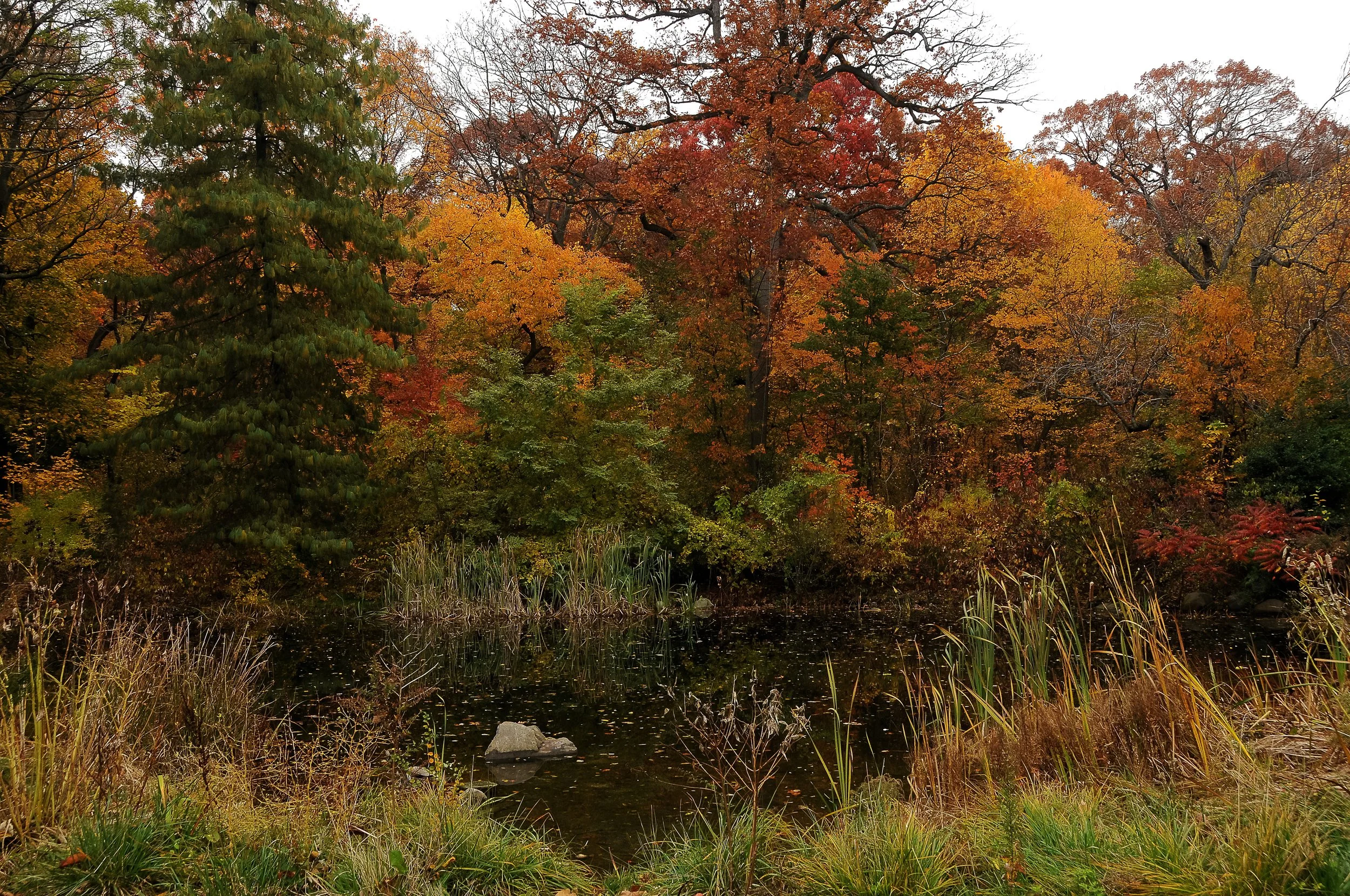Forever Wild Forests of New York City:
Prospect Park
Although Prospect Park is well known for its design and landscaping, the natural environments found throughout the park are equally impressive. When Frederick Law Olmsted (1822-1903) and Calvert Vaux (1824-1895) designed Prospect Park, they incorporated two areas of existing forest and an intricate network of wetlands into their plan. These wetlands emerged from a combination of park design and ice age glacial terrain. The Prospect Park Forever Wild Preserve is composed of the Ravine, one of the two original forests and a part of the “Watercourse” of wetlands.
The Ravine is on the moraine and is a series of small hills and kettles (ponds formed by submerged chunks of glacier during the last ice age) with a small stream entrenched in a steep valley. Olmsted and Vaux planted evergreen trees in an attempt to mimic an Adirondack landscape, but over time most of the evergreens died. Native oaks, such as the pin oak (Quercus palustris), as well as non-native Norway maples (Acer platanoides) and sycamore maples (A. pseudoplatanus), have filled in the gaps. The fertile, moist, and well-drained soils of this area make for what is called a “rich forest.” Around the Ravine are some of the oldest trees in the park, including oaks (Quercus spp.), tulip trees (Liriodendron tulipifera) and sweet gums (Liquidambar styraciflua).






View All Network Forests in the State of New York
View All Network Forests in the U.S.
View All Forest Designations
